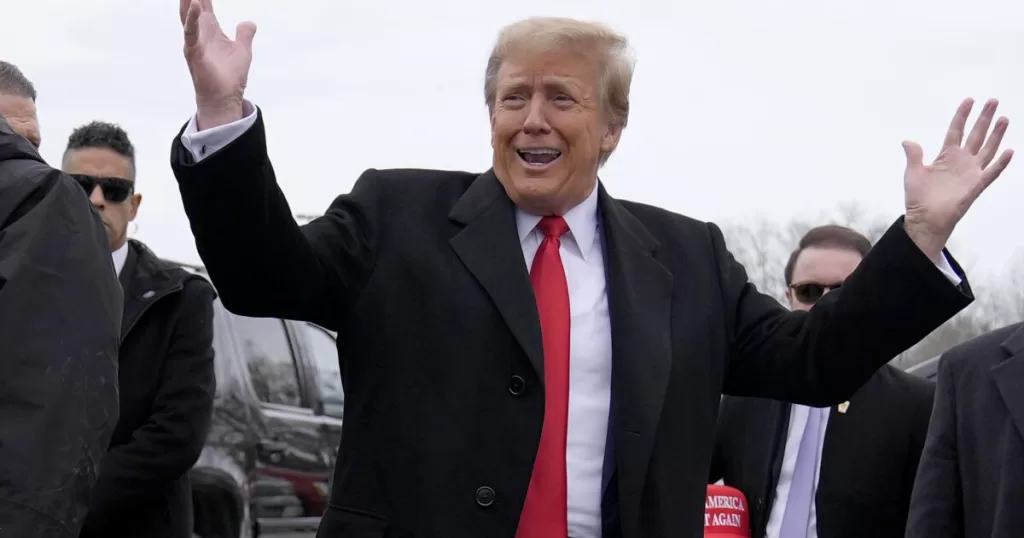While this might sound familiar to anyone reading about President Biden in recent weeks, I’m referring to the polling and headlines that confronted President Obama in the run-up to the 2012 election — which, in case you forgot, he won rather handily despite trailing Mitt Romney in surveys well ahead of the voting.
Over the last several election cycles, polling has increasingly become a central focus of media reporting on campaigns, particularly presidential contests. And that’s unfortunate. Average voters should rarely see or hear about polling because it’s not particularly relevant or actionable for them.
In many ways, however, polling is driving political media narratives. Polling is no longer a part of a news story; it is the news story.
The trouble is that horse race numbers can drive almost any narrative that politicians or journalists find expedient regardless of whether it’s accurate; see the great “red wave” media frenzy of the 2022 midterm elections, which of course proved to be the opposite of the truth. The mainstream media’s coverage of campaigns from such a standpoint is not only mistaken but also irresponsible.
Such coverage is doing to politics what modern cooking shows have done to gastronomy: turning it into something like a sporting competition in which much of the substance that could serve the viewer — such as how to cook anything — is lost in covering dramatic culinary contests. Likewise, instead of helping voters make informed decisions based on the differences between candidates, pundits (including me) spend a great deal of time making the case for or against a candidate based not on their policy positions but on their polling position. What’s lost is what the different records, beliefs and policy positions of the candidates might mean for voters’ everyday lives.
I do understand why polling has become a media obsession. People have always wanted to be able to predict the future, and polling is unfortunately being misconstrued as a political crystal ball.
But predicting the future is not what polls are for. “Polling is not designed or able to do what people most want it to do: predict election winners,” Monika McDermott, a Fordham University professor who studies political psychology and public opinion, told me. “There are far too many variables at stake in any election to perfectly predict the election. But the media and news consumers find horse race numbers exciting and easily digestible, and that’s why all the focus is on them.”
Covering the horse race therefore doesn’t just fail to give the voters vital information they need. It also spends an inordinate amount of time covering something that doesn’t have much of a relationship with what’s going to happen.
Working on campaigns, I often tell my clients that the horse race number — the one that shows how one candidate is faring versus another — is the least important one in a poll. That number is what campaign researchers are spending time and resources to understand how to change, and we do change it. Indeed, a presidential campaign will spend hundreds of millions of dollars to change that number. So as a pollster, I am not fixated on where my candidate is in the head-to-head number; I’m focused on the issues and messaging that will allow me to move that number.
In a two-person race, no candidate with less than 50% support is really safe. If you don’t have a majority, there are enough voters out there who can be persuaded and determine the outcome. So while the headlines scream that Trump leads Biden and the chattering progressive class panics, it really doesn’t matter much that Trump leads right now. The lead at this point, when the arguments and contrasts of the campaign have yet to be made, does not predict the ultimate winner.
That’s particularly true in a presidential contest. Ronald Reagan trailed early on in the public polling before his reelection, as did Bill Clinton, George W. Bush and Obama. But in the end, those national campaigns found compelling contrasts, effective attacks on their opponents, a story about their accomplishments in office and a vision for the future that moved voters toward them over time.
That’s what good campaign polling actually does: It explores how an attack affects different voters to understand how to target an ad. It determines where support is soft among base voters and how to show them that the candidate is fighting for them. It tests the most effective policy proposals to contrast with an opponent to move swing voters.
While horse race numbers are fluid and changeable, voters’ core values and beliefs are not. Good pollsters look beyond the top line to understand how voters make sense of and give order to their lives so we can show them that our candidate can be trusted.
Good campaign coverage should abide by similar principles. The average reader or viewer doesn’t get any helpful information from sensational headlines telling them who appears to be winning or losing right now. How about using more of those resources to explain what each candidate’s election would mean for people like them? That’s the kind of reporting that would lead to more informed voting and ensure that the best candidate wins.
Cornell Belcher is the president of Brilliant Corners Research & Strategies and an NBC News political analyst. He was a pollster for the Democratic National Committee and Barack Obama’s presidential campaigns.
